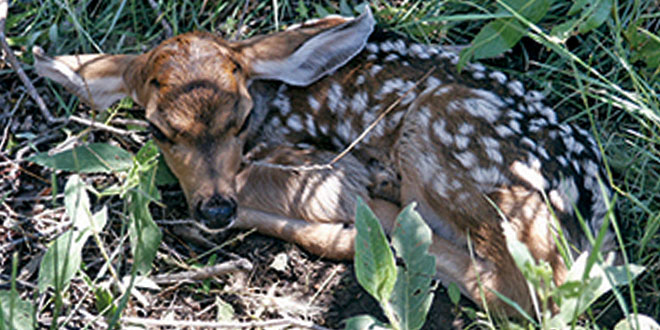Remember to practice safe boating and protect our water bodies from AIS
It won’t be long until boaters across New Mexico and the southwestern United States start getting their boats and equipment ready for fun-filled days on the lake. Planning and completing tasks is essential for all boat owners and while some of the things you need to do and take vary depending on the watercraft, two tasks that are common for all those boating in New Mexico are cleaning, draining and drying your watercraft to protect against Aquatic Invasive Species (AIS) and preparing for a watercraft inspection.
Since 2013, New Mexico Department of Game and Fish and its partners have been providing public outreach and conducting watercraft inspections at various water bodies across the state to prevent the introduction of AIS. Zebra mussels, quagga mussels, Eurasian watermilfoil and hydrilla are just a few of the many AIS species that have the potential to enter our waters and seriously impact recreation, irrigation and municipal drinking water activities. Once established, most AIS are difficult or impossible to remove.

The department conducts routine monitoring throughout the boating season as part of their early detection program. “At this time, there are no New Mexico water bodies that contain a population of zebra or quagga mussels, but the threat continues to increase every year,” said AIS Coordinator James Dominguez. “Help from the public is essential to keeping any AIS from entering our water bodies.”
What you need to know and how you can help?
- Completely clean, drain and dry your entire watercraft after every boat outing
- Remove boat and other drain plugs before getting on a New Mexico roadway
- Stopping at a watercraft inspection station is required
- Obtain a wire and seal when departing the lake—it will speed up your next inspection
- Lower motor, open compartments and have equipment ready for the inspector
- Call the department to schedule an inspection if you leave the state with your watercraft or your watercraft is registered out of state
- Unlike safety inspections, AIS inspections must be performed throughout the season
- The average boat inspection lasts about three minutes or less
- Inspections and decontaminations are free of charge
Free Fishing Day is September 28!
Anglers can fish for free in New Mexico on Saturday, September 28, as the state celebrates National Hunting and Fishing Day.

“This is a great time to take your family fishing and teach them a skill that will provide a lifetime of enjoyment,” said Kevin Holladay, former conservation education program manager for the New Mexico Department of Game and Fish.
Please remember: everyone must observe bag limits and all other rules and regulations. For information about where to fish and what to use, consult the department’s weekly fishing and stocking report.
Department offers summer hunter education camps
If you are looking for a great weekend activity, the Department of Game and Fish is offering several hunter education camps for kids this spring and summer:
- August 9-11: Sacramento at BSA Camp Wehinahpay. This camp will include .22 rifle, archery, and fishing.
- August 16-18: Raton at NRA Whittington Center. This camp will include responsible firearms handling, ethical hunting behaviors, conservation, wildlife identification and basic survival skills.
- September 6-8: Cimarron at Philmont Scout Ranch. This camp will be hosted in partnership with the Safari Club International Foundation.
All camps are open to youth 10 and over who have not yet had hunter education.
Biota Information System of New Mexico interface updated
SANTA FE – Want to learn more about species found in your part of the state? Check out the updated interface for the Biota Information System of New Mexico (BISON-M; bison-m.org).
BISON-M was first developed back in the 90’s and is continually being updated. It currently contains accounts for over 6,800 species found in New Mexico and neighboring states. BISON-M allows you to do searches for a particular species or get lists of species found in different parts of New Mexico.
New Mexico Department of Game and Fish, Natural Heritage New Mexico and DataWizards recently partnered to update the interface for the BISON-M website. The update included streamlining several of the search functions and adding new functionality.
Want to learn about the bird you just saw in your backyard? Want to see what species are found on public lands near your house? BISON-M can help you answer these questions and more.

“BISON-M is a continually evolving database,” said Ginny Seamster, the department’s BISON-M coordinator. “Feedback on the database, including identification of new references or provision of photographs for species that don’t currently have them, is always appreciated.”
Please visit the BISON-M website at www.bison-m.org for more information or contact Seamster at (505) 476-8111 or virginia.seamster@state.nm.us.
Public reminded to leave young wildlife alone
Spring in New Mexico is an exciting time for wildlife. This is the time of year when most babies are born. The New Mexico Department of Game and Fish reminds the public to leave alone any deer or antelope fawns, elk calves, bear cubs or other wild animals they may find.

Most young-of-the-year wildlife that people discover are simply hiding while awaiting their parents’ return from foraging nearby.
Removing these young animals can cost them their lives, Orrin Duvuvuei, department deer and pronghorn biologist, warned.
“For about a week after birth, young wildlife exhibit hiding behaviors to avoid detection and increase their chance for survival. You might think it has been abandoned, but in reality, the mother is typically a few hundred yards away,” Duvuvuei said. “In most cases, the best thing to do is just leave it alone and quietly leave the area.”
If you see young wildlife, please follow these guidelines:
- Do not approach. Its mother is likely close by and aware that you are in the area.
- Leave the area quickly and quietly.
- Observe the animal from a safe distance. Typically, wildlife babies that appear to be dry have bonded with their mothers, and you can safely take their pictures from this distance, but don’t linger in the area or touch the animal.
- If you think the animal has been abandoned, if possible mark the location using a GPS and contact the department by calling (888) 248-6866.
#fishnmwithbigfoot
April 1 kicked off the 2019-2020 fishing and game hunting license year. With the start of the season you can find the current Fishing Regulation and Information Booklet (RIB) posted on the department’s website; the printed version can be found at department offices and vendor locations across the state.
Page 26 has become the center of attention in this year’s fishing RIB. Look closely and you will notice Bigfoot lurking in the picture.
During the 2019-2020 license year, grab your gear, catch a fish, snap a picture with the current RIBs and share it on Instagram with the #fishnmwithbigfoot. We will be featuring photos on our social media feeds and sharing them throughout the year.
Good luck and happy fishing!
 New Mexico Wildlife magazine Conserving New Mexico's Wildlife for Future Generations
New Mexico Wildlife magazine Conserving New Mexico's Wildlife for Future Generations